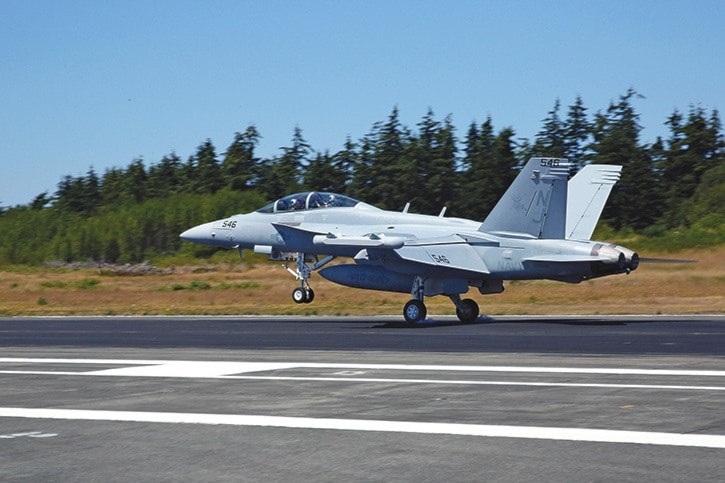U.S. Navy jet fighter training is reaching a higher noise level in Greater Victoria, one that is bringing grumbles from residents.
And it’s putting politicians on high alert. The mayors of both Victoria and Esquimalt and Victoria MP Murray Rankin say they’re receiving numerous complaints.
“There is significant concerns because it has escalated in the last while in terms of the frequency and the intensity,” said Esquimalt Mayor Barb Desjardins.
A group of homeowners from Saanich’s Ten Mile Point are hoping their concerns will be heard by the U.S. Navy during the consultation process over bringing additional EA-18 Growler jets at the Whidbey Island Naval Air Station.
“The extreme end of it is when jets swing too close to (Ten Mile Point) our houses shake and car alarms are set off,” said Graham Payette, who’s family lives near the tip of Ten Mile Point.
It happens with enough frequency that Payette wonders if the navy could release a schedule detailing the exercises, and if there’s anything that can be done to mitigate the impact.
“Our neighbourhood group wasn’t aware of the (navy’s) call for input until the last day, and some of us managed to get some input in, but not all of us,” Payette said.
“We want to create more awareness and to be included in the assessment process, not just on the residential impact but environmental as well. If it sets off car alarms, we want to know how this resinates with the resident orca of the southern Island.”
Whidbey Island Navy spokesperson Ted Brown is running an environmental impact consultation process at the base, situated across the waters of the Juan de Fuca Strait, is gradually replacing the 1970’s era EA-6B Prowlers with the Boeing EA-18G electronic warfare aircraft, or Growlers.
Brown said the initial public consultation window, which is now closed, will re-open in about 2016 to allow amendments to the first draft of the environmental impact report which he is now working on.
It’s the naval air station’s third environmental review in 10 years. It studies noise and other impacts from thousands of landings and takeoffs conducted at Ault Field near Oak Harbor, Wash. and the Outlying Landing Field near Coupeville, Wash. The consultation is prompted by the addition of 13 more EA-18s and a contract to train Australian pilots on the planes at NAS Whidbey.
Prior reviews were environmental assessments; this EIS is more extensive and is conducted under the more strict National Environmental Protection Act standards and rules.
The perception of increased noise and increased frequency of operations has generated more local complaints on Whidbey Island, and a citizen’s group called Citizens of the Ebey’s Reserve for a Healthy, Safe and Peaceful Environment filed a lawsuit against the navy in July. The navy suspended training flights for six months in 2013, but resumed them this month.
Rankin has had discussions with U.S. Navy officials on Whidbey Island and they said they were willing to adjust their timing and the location of the training schedule based on noise complaints.
He also plans to bring it up with Canadian military officials in Ottawa.
“I don’t want top be skeptical. I want to give them [the U.S. Navy] every opportunity to do the right thing here. We’ll see if we can use diplomacy. We’ll see if the minister talking to his U.S. counterpart could see if they could mitigate this in some fashion,” Rankin said.
